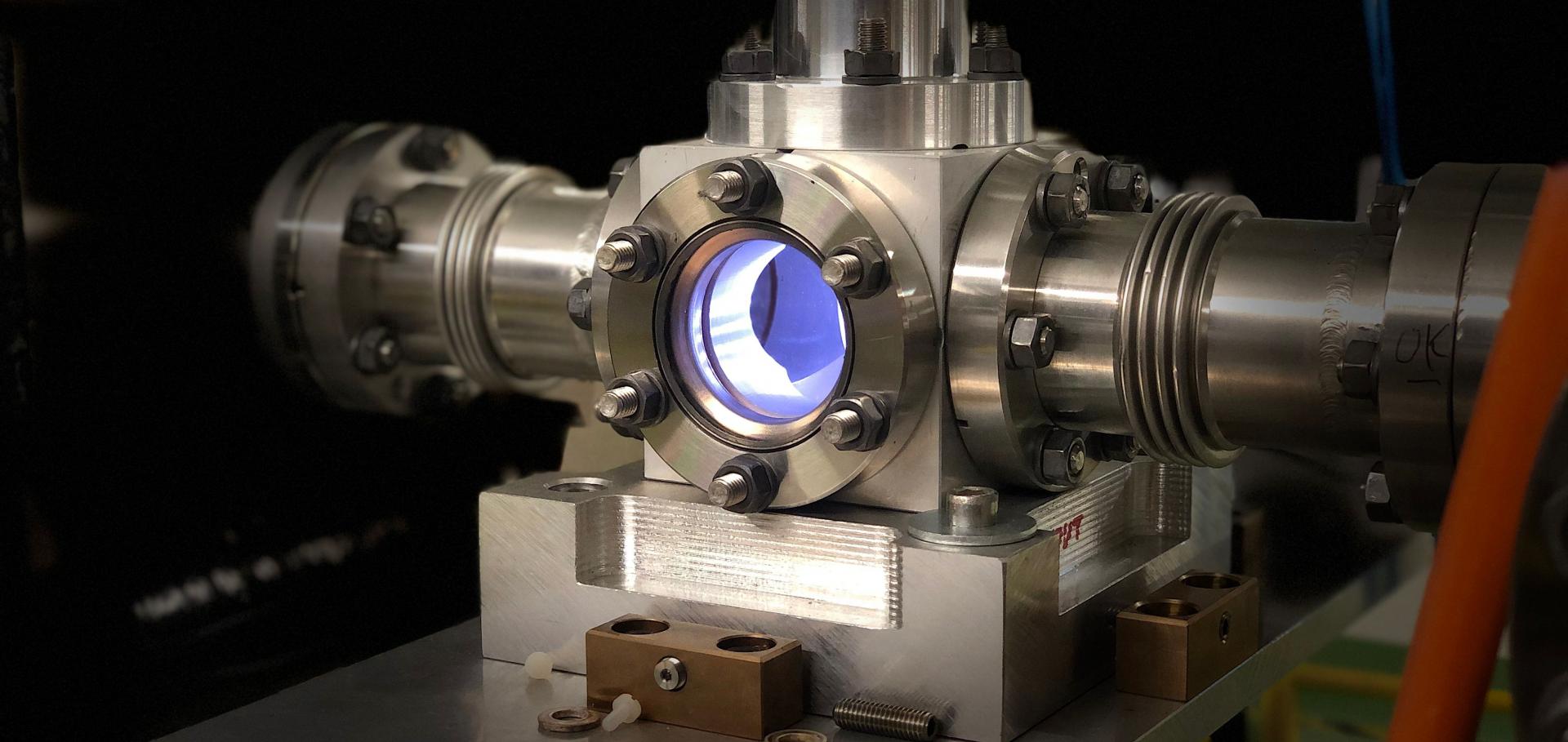Intensity dependent effects in the ILC BDS
International Particle Accelerator Conference Proceedings JACoW Publishing (2019) 305-307
Demonstration and characterisation of a novel dual-scattering system for very high energy electrons
Nuclear Instruments and Methods in Physics Research Section A Accelerators Spectrometers Detectors and Associated Equipment Elsevier (2025) 170943
Abstract:
This article describes the design and implementation of the first known prototype of a dual-scattering system for the delivery of a uniform VHEE beam with transverse dimensions suitable for pre-clinical and potential future clinical use. The results presented in this article are the first experimental characterisation of beam flattening with dual-scattering foils in the VHEE regime, confirmed with both profile measurements with a YAG screen and radiochromic EBT3 films. Polylactic acid and aluminium dual-scattering systems were designed using TOPAS Monte-Carlo simulations and multi-objective minimisation methods. Studies to test the success of the scattering systems in providing beam magnification and uniformity were carried out at the 200 MeV CERN Linear Electron Accelerator for Research (CLEAR) facility. A generalised super-Gaussian function was used to model the final beam, and comparisons were made with the simulations used for the design. Transverse profiles with uniform components were measured with each of the scattering systems and quantified with super-Gaussian fitting. The uniformity of the in-air profiles suggested that the superficial dose contributions from X-rays were low. This study demonstrated that magnified VHEE beam profiles with uniform components could be generated and measured at CLEAR. The results from this study were used as a basis for the design of future experiments. Similar systems and design methods could be employed by future clinical VHEE facilities to provide conformal treatment.Radiation damage and recovery of plastic scintillators under ultra-high dose rate 200 MeV electrons at CERN CLEAR facility
Physics in Medicine & Biology IOP Publishing 70:7 (2025) 075018
Abstract:
Objective. The FLASH effect holds significant potential in improving radiotherapy treatment outcomes. Very high energy electrons (VHEEs) with energies in the range of 50–250 MeV can effectively target tumors deep in the body and can be accelerated to achieve ultra-high dose rates (UHDR), making them a promising modality for delivering FLASH radiotherapy in the clinic. However, apart from suitable VHEE sources, clinical translation requires accurate dosimetry, which is challenging due to the limitation of standard dosimeters under UHDR conditions. In this study, water-equivalent and real-time plastic scintillation dosimeters (PSDs) are tested to evaluate their viability for FLASH VHEE dosimetry. Approach. A 4-channel PSD, consisting of polystyrene-based BCF12 and Medscint proprietary scintillators, polyvinyltoluene-based EJ-212 and a blank plastic fiber channel for Cherenkov subtraction was exposed to the 200 MeV VHEE UHDR beam at the CLEAR CERN facility. The Hyperscint RP200 platform was used to assess linearity to dose pulses of up to 90 Gy and dose rates up to 4.6×109 Gy s−1, and to investigate radiation damage and recovery after dose accumulation of 37.2 kGy. Main results. While blank fiber response was linear across the entire dose range studied, light output saturated above 45 Gy/pulse for scintillators. Despite radiation damage, linearity was preserved, though it resulted in a decrease of scintillator and blank fiber light output of <1.87%/kGy and a shift in spectra towards longer wavelengths. Short-term recovery ( <100 h) of these changes was observed and depended on rest duration and accumulated dose. After long-term rest ( <172 days), light output recovery was partial, with 6%–22% of residual permanent damage remaining, while spectral recovery was complete. Significance. We showed that PSDs are sensitive to radiation damage, but maintain dose linearity even after a total accumulated dose of 37.2 kGy, and exhibit significant response recovery. This work highlights the potential of PSDs for dosimetry in UHDR conditions.A Systematic Investigation of Beam Losses and Position-Reconstruction Techniques Measured with a Novel oBLM at CLEAR †
Instruments MDPI 9:1 (2025) 4
Abstract:
Optical Beam-Loss Monitors (oBLMs) allow for cost-efficient and spatially continuous measurements of beam losses at accelerator facilities. A standard oBLM consists of several tens of metres of optical fibre aligned parallel to a beamline, coupled to photosensors at either or both ends. Using the timing information from loss signals, the loss positions can be reconstructed. This paper presents a novel oBLM system recently deployed at the CERN Linear Electron Accelerator for Research (CLEAR). Multiple methods of extracting timing and position information from measured waveforms with silicon photomultipliers (SiPM) and photomultiplier tubes (PMT) are investigated. For this installation, the optimal approach is determined to be applying a constant fraction discrimination (CFD) on the upstream readout. The position resolution is found to be similar for the tested SiPM and PMT. This work has resulted in the development of a user interface to aid operations by visualising the beam losses and their positions in real time.Spatially fractionated radiotherapy with very high energy electron pencil beam scanning
Physics in Medicine & Biology IOP Publishing 70:1 (2024) 015011


